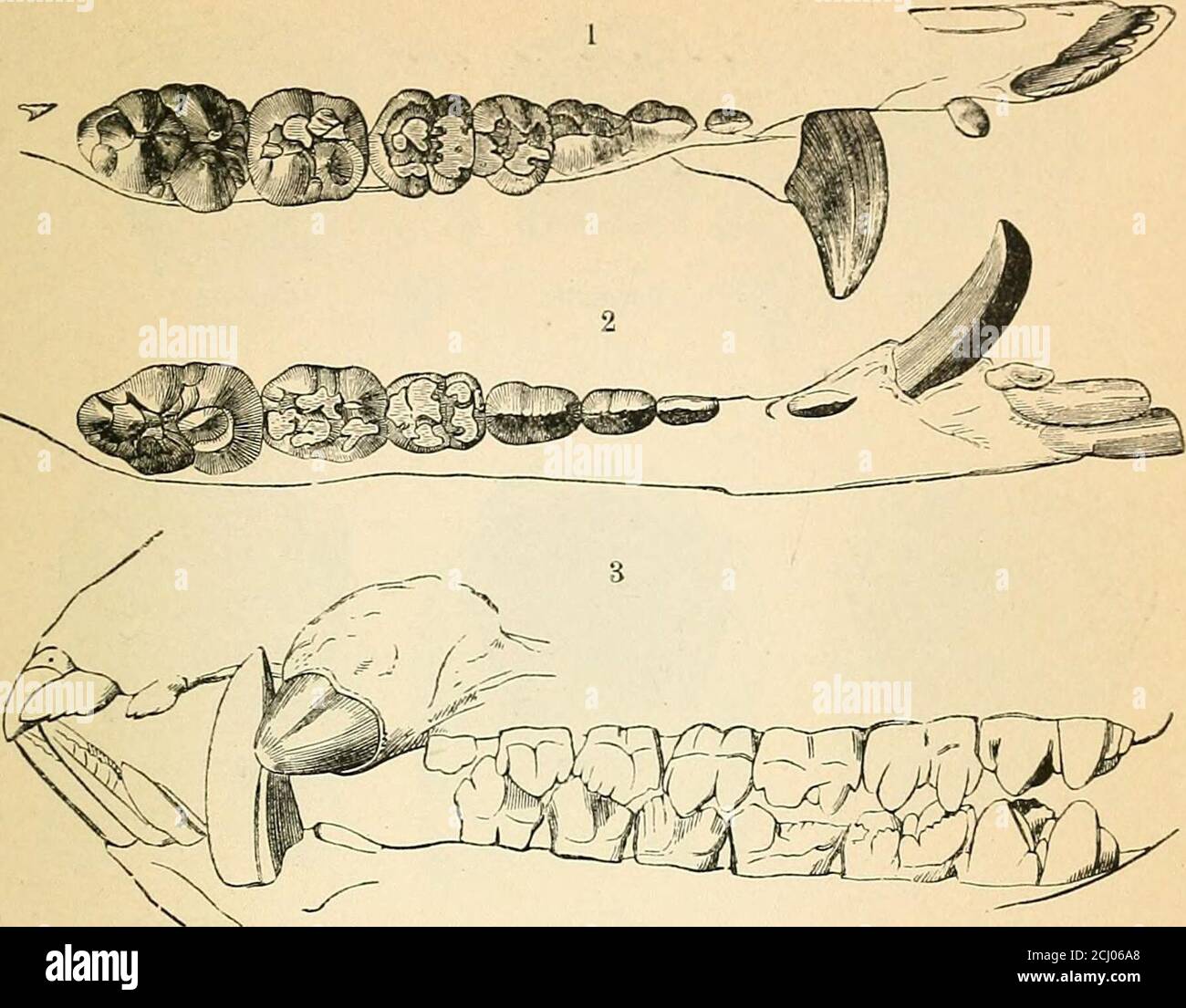. A text-book of comparative physiology for students and practitioners of comparative (veterinary) medicine . he growth of the jaw and the need of stronger teeth, eitheras weapons of defense and attack or in order the more effectu-ally to secure and prepare food. The permanent teeth are alsomore numerous than the milk teeth. The dentition of our domestic animals may be expressedthus : Dos. Cat. Man. Pig- Ox. Horse. 3-3Incisors, oq 1-1canines, y.r 3-3 1-1 3-3 1-1 2-2 1-1 2-2 1-1 3-3 1-1 3-3 1-1 0-0 0-0 3-3 1-1 3-3 1-1 3-3 1-1 3-3 0-0 3-3 0-0 4-4premolars, t^7 3-32-22-22-23-33-33-33-33-33-30-

Image details
Contributor:
Reading Room 2020 / Alamy Stock PhotoImage ID:
2CJ06A8File size:
7.1 MB (303 KB Compressed download)Releases:
Model - no | Property - noDo I need a release?Dimensions:
1788 x 1397 px | 30.3 x 23.7 cm | 11.9 x 9.3 inches | 150dpiMore information:
This image is a public domain image, which means either that copyright has expired in the image or the copyright holder has waived their copyright. Alamy charges you a fee for access to the high resolution copy of the image.
This image could have imperfections as it’s either historical or reportage.
. A text-book of comparative physiology for students and practitioners of comparative (veterinary) medicine . he growth of the jaw and the need of stronger teeth, eitheras weapons of defense and attack or in order the more effectu-ally to secure and prepare food. The permanent teeth are alsomore numerous than the milk teeth. The dentition of our domestic animals may be expressedthus : Dos. Cat. Man. Pig- Ox. Horse. 3-3Incisors, o~~q 1-1canines, y~.r 3-3 1-1 3-3 1-1 2-2 1-1 2-2 1-1 3-3 1-1 3-3 1-1 0-0 0-0 3-3 1-1 3-3 1-1 3-3 1-1 3-3 0-0 3-3 0-0 4-4premolars, t^7 3-32-22-22-23-33-33-33-33-33-30-00-0 2-2 molars, 5—5 = 42. 1-11-13-33-34-44-43-33-33-33-33-33-3 = 30. = 32. = 44. 32. = 40. = 24. The latter is the representation of the milk dentition. Themare is without canines (tushes). It will be noticed that in the ox incisors and canines do notappear in the upper jaw, though they are represented by embry-onic rudiments. The table above and that on page 296 (after Leyh) give alarge amount of information in a small space, and are illus-trated by the accompanying figures : DIGESTION OF FOOD. 291. Fig. 242.—The teeth of the pig (Chauveau). 1, upper teeth, table surface; 2, lowerteeth, table aspect; 3, lateral view of jaws.